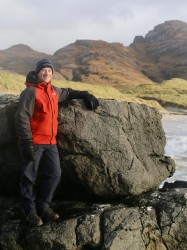BibTex format
@article{Riveros:2022:10.1007/s00126-021-01058-z,
author = {Riveros, Jensen K and Campos, E and Wilkinson, J and Wilkinson, C and Kearsley, A and Miranda-Diaz, G and Veliz, W},
doi = {10.1007/s00126-021-01058-z},
journal = {Mineralium Deposita: international journal of geology, mineralogy, and geochemistry of mineral deposits},
pages = {279--300},
title = {Hydrothermal fluid evolution in the Escondida porphyry copper deposit, northern Chile: evidence from SEM-CL imaging of quartz veins and LA-ICP-MS of fluid inclusions},
url = {http://dx.doi.org/10.1007/s00126-021-01058-z},
volume = {57},
year = {2022}
}

